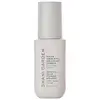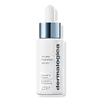What's inside
What's inside
 Key Ingredients
Key Ingredients

 Benefits
Benefits

 Concerns
Concerns

 Ingredients Side-by-side
Ingredients Side-by-side

Water
Skin ConditioningDicaprylyl Carbonate
EmollientPotassium Azeloyl Diglycinate
Skin ConditioningMaltodextrin
Absorbent1,2-Hexanediol
Skin ConditioningPropanediol
SolventAvena Sativa Kernel Extract
AbrasiveAloe Barbadensis Leaf Juice
Skin ConditioningDipotassium Glycyrrhizate
HumectantSodium Hyaluronate
HumectantPanthenol
Skin ConditioningHydroxyacetophenone
AntioxidantLactic Acid
BufferingBenzoic Acid
MaskingCitric Acid
BufferingSodium Lactate
BufferingSodium Gluconate
Skin ConditioningSclerotium Gum
Emulsion StabilisingPolyglyceryl-2 Stearate
EmulsifyingXanthan Gum
EmulsifyingGlyceryl Stearate
EmollientStearyl Alcohol
EmollientWater, Dicaprylyl Carbonate, Potassium Azeloyl Diglycinate, Maltodextrin, 1,2-Hexanediol, Propanediol, Avena Sativa Kernel Extract, Aloe Barbadensis Leaf Juice, Dipotassium Glycyrrhizate, Sodium Hyaluronate, Panthenol, Hydroxyacetophenone, Lactic Acid, Benzoic Acid, Citric Acid, Sodium Lactate, Sodium Gluconate, Sclerotium Gum, Polyglyceryl-2 Stearate, Xanthan Gum, Glyceryl Stearate, Stearyl Alcohol
Water
Skin ConditioningPEG-8
HumectantGlycerin
HumectantMethylpropanediol
SolventPropanediol
SolventPPG-24-Glycereth-24
Emulsifying1,2-Hexanediol
Skin ConditioningXylitylglucoside
HumectantButylene Glycol
HumectantHydroxyethyl Urea
HumectantPanthenol
Skin ConditioningHydroxyacetophenone
AntioxidantLactic Acid
BufferingHyaluronic Acid
HumectantSodium Hyaluronate
HumectantDunaliella Salina Extract
Skin ConditioningAvena Sativa Kernel Extract
AbrasiveCitrus Aurantium Bergamia Fruit Oil
MaskingCitrus Paradisi Peel Oil
MaskingCitrus Limon Peel Oil
MaskingSantalum Album Oil
MaskingLaminaria Digitata Extract
Skin ProtectingJasminum Sambac Flower Extract
MaskingChondrus Crispus Extract
Skin ConditioningGigartina Stellata Extract
Skin ProtectingMacrocystis Pyrifera Extract
Skin ConditioningPrunus Amygdalus Dulcis Oil
Skin ConditioningLithothamnion Calcareum Extract
Skin ConditioningCitrus Aurantium Dulcis Oil
MaskingCupressus Sempervirens Oil
MaskingCistus Ladaniferus Leaf/Stem Extract
MaskingJuniperus Virginiana Oil
MaskingRosmarinus Officinalis Flower/Leaf/Stem Extract
MaskingTagetes Minuta Flower Oil
MaskingRosa Damascena Flower
Skin ConditioningHydrolyzed Rice Protein
Skin ConditioningPentylene Glycol
Skin ConditioningSodium PCA
HumectantAnhydroxylitol
HumectantXylitol
HumectantPolyglutamic Acid
Skin ConditioningLactobacillus Ferment
Skin ConditioningLysine Hcl
Skin ConditioningBetaine
HumectantSclerotium Gum
Emulsion StabilisingSodium Lactate
BufferingPCA
HumectantGlucose
HumectantSerine
MaskingAlanine
MaskingGlycine
BufferingSilanetriol
Pantolactone
HumectantGlutamic Acid
HumectantThreonine
Arginine
MaskingProline
Skin ConditioningXanthan Gum
EmulsifyingTetrasodium Glutamate Diacetate
Polysorbate 20
EmulsifyingSorbitan Isostearate
EmulsifyingCitric Acid
BufferingSodium Hydroxide
BufferingHydroxyethyl Acrylate/Sodium Acryloyldimethyl Taurate Copolymer
Emulsion StabilisingAmylopectin
Hydroxyethylcellulose
Emulsion StabilisingSodium Benzoate
MaskingPotassium Sorbate
PreservativeLimonene
PerfumingLinalool
PerfumingWater, PEG-8, Glycerin, Methylpropanediol, Propanediol, PPG-24-Glycereth-24, 1,2-Hexanediol, Xylitylglucoside, Butylene Glycol, Hydroxyethyl Urea, Panthenol, Hydroxyacetophenone, Lactic Acid, Hyaluronic Acid, Sodium Hyaluronate, Dunaliella Salina Extract, Avena Sativa Kernel Extract, Citrus Aurantium Bergamia Fruit Oil, Citrus Paradisi Peel Oil, Citrus Limon Peel Oil, Santalum Album Oil, Laminaria Digitata Extract, Jasminum Sambac Flower Extract, Chondrus Crispus Extract, Gigartina Stellata Extract, Macrocystis Pyrifera Extract, Prunus Amygdalus Dulcis Oil, Lithothamnion Calcareum Extract, Citrus Aurantium Dulcis Oil, Cupressus Sempervirens Oil, Cistus Ladaniferus Leaf/Stem Extract, Juniperus Virginiana Oil, Rosmarinus Officinalis Flower/Leaf/Stem Extract, Tagetes Minuta Flower Oil, Rosa Damascena Flower, Hydrolyzed Rice Protein, Pentylene Glycol, Sodium PCA, Anhydroxylitol, Xylitol, Polyglutamic Acid, Lactobacillus Ferment, Lysine Hcl, Betaine, Sclerotium Gum, Sodium Lactate, PCA, Glucose, Serine, Alanine, Glycine, Silanetriol, Pantolactone, Glutamic Acid, Threonine, Arginine, Proline, Xanthan Gum, Tetrasodium Glutamate Diacetate, Polysorbate 20, Sorbitan Isostearate, Citric Acid, Sodium Hydroxide, Hydroxyethyl Acrylate/Sodium Acryloyldimethyl Taurate Copolymer, Amylopectin, Hydroxyethylcellulose, Sodium Benzoate, Potassium Sorbate, Limonene, Linalool
 Reviews
Reviews

Ingredients Explained
These ingredients are found in both products.
Ingredients higher up in an ingredient list are typically present in a larger amount.
1,2-Hexanediol is a synthetic liquid and another multi-functional powerhouse.
It is a:
- Humectant, drawing moisture into the skin
- Emollient, helping to soften skin
- Solvent, dispersing and stabilizing formulas
- Preservative booster, enhancing the antimicrobial activity of other preservatives
Avena Sativa Kernel Extract is is derived from colloidal oatmeal. Besides being a healthy breakfast, oats have many benefits in skincare too.
This ingredient helps sooth, hydrate, and protect the skin. The starches in colloidal oatmeal are able to bind water, keeping the skin hydrated.
The cellulose and fiber in colloidal oatmeal help reduce inflammation. This can also help the skin feel softer.
Colloidal Oatmeal is also an antioxidant. Antioxidants protect our skin from free-radical damage.
Oatmeal also contains beneficial compounds:
This ingredient is created by mixing grounded oatmeal and a liquid base.
Learn more about Avena Sativa Kernel ExtractCitric Acid is an alpha hydroxy acid (AHA) naturally found in citrus fruits like oranges, lemons, and limes.
Like other AHAs, citric acid can exfoliate skin by breaking down the bonds that hold dead skin cells together. This helps reveal smoother and brighter skin underneath.
However, this exfoliating effect only happens at high concentrations (20%) which can be hard to find in cosmetic products.
Due to this, citric acid is usually included in small amounts as a pH adjuster. This helps keep products slightly more acidic and compatible with skin's natural pH.
In skincare formulas, citric acid can:
While it can provide some skin benefits, research shows lactic acid and glycolic acid are generally more effective and less irritating exfoliants.
Most citric acid used in skincare today is made by fermenting sugars (usually from molasses). This synthetic version is identical to the natural citrus form but easier to stabilize and use in formulations.
Read more about some other popular AHA's here:
Learn more about Citric AcidHydroxyacetophenone is antioxidant with skin conditioning and soothing properties. It also boosts the efficiency of preservatives.
This ingredient is not irritating or sensitizing.
Lactic Acid is another well-loved alpha hydroxy acid (AHA). It is gentler than glycolic acid but still highly effective.
Its main role is to exfoliate the surface of the skin by loosening the “glue” that holds dead skin cells together. Shedding those old cells leads to smoother, softer, and more even-toned skin.
Because lactic acid molecules are larger than glycolic acid, they don’t penetrate as deeply. This means they’re less likely to sting or irritate, making it a great choice for beginners or those with sensitive skin.
Like glycolic acid, it can:
Lactic acid also acts as a humectant (like hyaluronic acid). It can draw water into the skin to improve hydration and also plays a role in the skin's natural moisturizing factor (NMF) in the form of sodium lactate.
Studies show it can boost ceramide production to strengthen the skin barrier and even help balance the skin’s microbiome.
To get results, choose products with a pH between 3-4.
Lower strengths (5-12%) focus on surface exfoliation; higher strengths (12% and up) can reach deeper in the dermis (deeper, supportive layer) to improve skin texture and firmness over time.
Though it was originally derived from milk, most modern lactic acid used in skincare is vegan. It is made through non-dairy fermentation to create a bio-identical and stable form suitable for all formulations.
When lactic acid shows up near the end of an ingredient list, it usually means the brand added just a tiny amount to adjust the product’s pH.
Legend has it that Cleopatra used to bathe in sour milk to help reduce wrinkles.
Lactic acid is truly a gentle multitasker: it exfoliates, hydrates, strengthens, and brightens. It's a great ingredient for giving your skin a smooth, glowing, and healthy look without the harshness of stronger acids.
Read more about some other popular AHA's here:
Learn more about Lactic AcidPanthenol is a common ingredient that helps hydrate and soothe the skin. It is found naturally in our skin and hair.
There are two forms of panthenol: D and L.
D-panthenol is also known as dexpanthenol. Most cosmetics use dexpanthenol or a mixture of D and L-panthenol.
Panthenol is famous due to its ability to go deeper into the skin's layers. Using this ingredient has numerous pros (and no cons):
Like hyaluronic acid, panthenol is a humectant. Humectants are able to bind and hold large amounts of water to keep skin hydrated.
This ingredient works well for wound healing. It works by increasing tissue in the wound and helps close open wounds.
Once oxidized, panthenol converts to pantothenic acid. Panthothenic acid is found in all living cells.
This ingredient is also referred to as pro-vitamin B5.
Learn more about PanthenolPropanediol is an all-star ingredient. It softens, hydrates, and smooths the skin.
It’s often used to:
Propanediol is not likely to cause sensitivity and considered safe to use. It is derived from corn or petroleum with a clear color and no scent.
Learn more about PropanediolSclerotium Gum is a polysaccharide gum made by the fungus, Sclerotium rolfssii. It is similar to xanthan gum.
In cosmetics, Sclerotium Gum is used to thicken the texture and to help stabilize other ingredients.
As an emulsifier, Sclerotium Gum helps prevent ingredients from separating, such as water and oil.
Learn more about Sclerotium GumSodium Hyaluronate is hyaluronic acid's salt form. It is commonly derived from the sodium salt of hyaluronic acid.
Like hyaluronic acid, it is great at holding water and acts as a humectant. This makes it a great skin hydrating ingredient.
Sodium Hyaluronate is naturally occurring in our bodies and is mostly found in eye fluid and joints.
These are some other common types of Hyaluronic Acid:
Learn more about Sodium HyaluronateSodium Lactate is the sodium salt of lactic acid, an AHA. It is a humectant and sometimes used to adjust the pH of a product.
This ingredient is part of our skin's NMF, or natural moisturizing factor. Our NMF is essential for the hydration of our top skin layers and plasticity of skin. NMF also influences our skin's natural acid mantle and pH, which protects our skin from harmful bacteria.
High percentages of Sodium Lactate can have an exfoliating effect.
Fun fact: Sodium Lactate is produced from fermented sugar.
Learn more about Sodium LactateWater. It's the most common cosmetic ingredient of all. You'll usually see it at the top of ingredient lists, meaning that it makes up the largest part of the product.
So why is it so popular? Water most often acts as a solvent - this means that it helps dissolve other ingredients into the formulation.
You'll also recognize water as that liquid we all need to stay alive. If you see this, drink a glass of water. Stay hydrated!
Learn more about WaterXanthan gum is used as a stabilizer and thickener within cosmetic products. It helps give products a sticky, thick feeling - preventing them from being too runny.
On the technical side of things, xanthan gum is a polysaccharide - a combination consisting of multiple sugar molecules bonded together.
Xanthan gum is a pretty common and great ingredient. It is a natural, non-toxic, non-irritating ingredient that is also commonly used in food products.
Learn more about Xanthan Gum